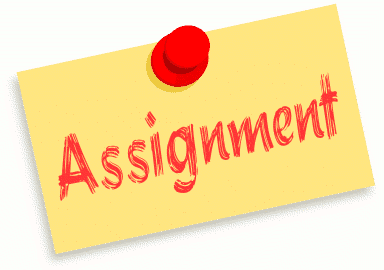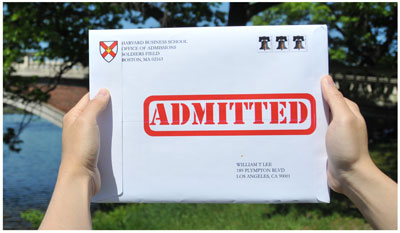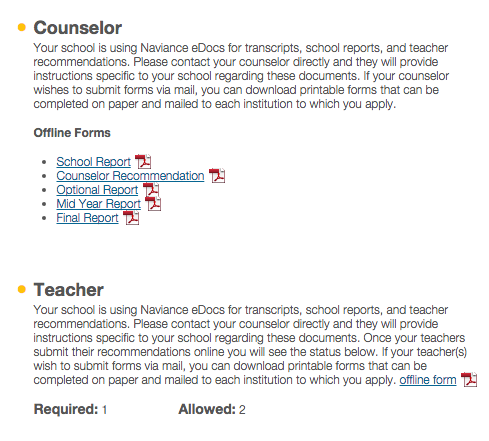How To Put Letters Of Recommendation On Common App
Hopefully, you have the perfect teachers in mind to ask for your letter of recommendation. Once you've asked these teachers, how do you actually get their letters to your colleges? This guide will go over everything you need to know about submitting your recommendation letters, whether you're using the Common Application, a customized school application, and/or Naviance. To start, what are the options for submission? Technically, there are two options for submission: online or by mail. Note the use of "or"; colleges don't want teachers to mix and match. In other words, schools don't want a single teacher to submit her ranking form online and then send her letter by mail. If she's submitting online, then she should submit everything online. If by mail, then everything should go by mail. Generally speaking, most students reading this will have their recommenders submit their letters online. Since you're already doing more than enough with the college application process, you might be relieved to hear that you don't actually have to submit your letters! Your teachers and counselor are responsible for uploading the rec letters to whatever system you're using. What you are responsible for, though, is inviting them. Make sure you give them clear deadlines, send a reminder email, and double check that your schools received their letters. Whichever mode you're using to apply—the Common Application, Universal Application, school-specific app, and/or Naviance software—you'll assign your recommenders. The rest is up to them! In rare cases, your recommender might prefer or need to send her letter of recommendation by snail mail. This may be the case if you're sending an extra supplemental recommendation, or if your school uses Naviance and you need to assign a recommender outside of your immediate school faculty. This method is usually fine, though not preferred, by colleges—just notify your college to expect the arrival of this document. As you can tell, there are various ways to apply, and, therefore, there are different ways to deliver your letters of recommendation to colleges. Let's consider how exactly your recommenders will submit in a few different scenarios. Online rec letter submission is generally a straightforward process. First, you invite, or "assign," your recommenders. Then, your recommenders get an email prompting them to upload their letters. The main question you need to answer is what system you're using to invite your recommenders, whether you're applying via an online school application, the Common App, Naviance, or a combination of all three. Let's look at all these options, starting with school-specific applications. In this scenario, you're applying to school through its individual online application system. Schools in the University of Texas system, for example, use their own applications and don't participate in the Common App. If your college allows or requires recommendation letters, then it will have a page on which you can invite your recommenders. Typically you'll be asked to fill in their first and last names, position (like English Teacher), and email address. The University of Texas application has its own "Document Upload System." If your college doesn't want you to send recommendation letters, like University of California schools, then you won't find this function on your application. Some school applications will also prompt you to respond to a question about FERPA. Generally speaking, you should go ahead and waive your right to view recommendation letters, as they're expected to be confidential between letter writers and the admissions officers who read them. All of the above instructions should work for the Common Application too. The only difference is that you'll probably have to assign recommenders for more than one college. The majority of college applicants are high school seniors, and most of the college application advice out there is aimed at them. But what do you do if you don't fall into this narrow category? Our eBook on how to prepare for and apply to college as a nontraditional student will walk you through everything you need to know, from the coursework you should have under your belt to how to get letters of recommendation when you're not a high school senior. Your first step in completing the recommendation letter requirement through the Common Application is signing your FERPA waiver. Once you sign this, you'll be able to invite recommenders. First, head to the "Colleges" tab. From there, you'll be able to assign recommenders by each individual college on your list. Each school, by the way, customizes its own page. If your school requires two teacher recommendations, for example, then you'll see space to invite two teacher recommenders. Many schools also allow you to assign one or two "Other Recommenders." This space is for letters beyond the requirements. Before sending any supplemental letters, check to learn your colleges' stance: some colleges actively discourage the submission of extra materials. Once you invite your recommenders, your teachers will receive emails prompting them to submit their letters. Your recommenders are responsible for uploading their recs by the stated deadlines. Conveniently, you'll see a status change once your letters are uploaded (usually yellow means not yet, and green means you're good to go!). While your letters will be attached to your application, they won't actually get sent to your colleges until you hit submit and pay the application fees (or use a fee waiver). That means that the final step of actually getting your letters to the admissions committee is ultimately in your hands. While inviting your recommenders through your online applications is a simple process, it's not actually how you'll send your letters if your high school uses the e-docs delivery software, Naviance. Read on to learn how Naviance links up to your applications to collect required documents, like your recommendation letters. Want to build the best possible college application? We can help. PrepScholar Admissions is the world's best admissions consulting service. We combine world-class admissions counselors with our data-driven, proprietary admissions strategies. We've overseen thousands of students get into their top choice schools, from state colleges to the Ivy League. We know what kinds of students colleges want to admit. We want to get you admitted to your dream schools. Learn more about PrepScholar Admissions to maximize your chance of getting in. Many high schools use the college e-docs software program Naviance. Your counselor controls one end of Naviance from her account, and you control and access another part with yours (called Family Connection). Naviance lets you search for colleges and keep track of deadlines and submitted documents. At the same time, your counselor can upload documents, like the secondary school report and school transcript. Your Naviance account and all the documents it collects, including your recommendation letters, will sync up to your Common Application and any other school applications that accept e-docs. If you are using the Common Application, you'll need to "match" your Common App and Naviance accounts. You'll enter the name of your high school on the Common App and sign the FERPA waiver. Once you've done this, your "Assign Recommenders" page should look like this: As you can see, you won't actually be inviting your recommenders through the Common Application. Instead, you'll invite your recommenders directly through Naviance. Since your Naviance account is directly connected to your high school, you can just select your teacher recommenders from a drop down list that has all the teachers in the school. You simply choose the teacher and add a personal note, making sure to indicate which colleges you want her to write letters for. While this process makes it easier on you—you don't have to collect your teachers' first and last names and email addresses—it also has some limitations. Can you see what they are? Instead of manually entering your teachers' contact info, as described above, Naviance asks you to select your teachers from a drop down menu. While this makes your teacher recommendations easy to request, it doesn't allow you to ask anyone outside of your school's faculty. Some students wish to send supplemental recommendations, like from a private music teacher, coach, or supervisor. Others may have switched high schools and want to ask a teacher from their previous school, or perhaps one who recently retired and has been removed from the drop down list of current faculty. If any of these scenarios apply to you, then you'd have to invite your external recommender through your online application. If you find yourself exceeding the number that your application allows, then you could print out the evaluation form and have your recommender send her documents by mail. (Of course, exercise caution about sending too many extra letters!) This process may sound a bit complicated, but once you sit down at your computer, you'll actually find it to be pretty intuitive. You'll either assign recommenders through your online applications, or you'll choose them through Naviance. Finally, you may have some recommenders who have full-fledged technophobia and insist on sending their letters by mail. While not preferred by colleges, this method is actually pretty easy. Despite rumors of a shutdown a few years ago, the post office is still going strong and available to deliver your orange envelopes to colleges. If your recommender wants to send a hard copy, make sure to print out any ranking form that needs to accompany the evaluation letter. Then give your recommender a pre-stamped, pre-addressed envelope. Typically, these envelopes should be sent to the school's undergraduate admissions office. As with all your recommenders, make sure this teacher knows your deadlines, and follow up with her to check that she sent it in. Don't worry if this package arrives before you submit your application. The college will start a file on each applicant and collect any materials that arrive within that file before eventually sitting down to review it as a complete application. Since there are a few different options, let's review the key steps that you need to know for submitting your recommendation letters. You may find yourself using a school application and/or the Common Application to apply. Additionally, you may also have a Naviance account connected to your school. Without Naviance, you simply invite your recommenders directly through your online applications by providing their full names, positions, and email addresses. With Naviance, you'll need to sync up your applications and invite your recommenders through your Naviance account, manually indicating which colleges you want them to write letters for. If you run into any technical difficulties through the process, make sure to speak to your counselor about troubleshooting. The most common place that students get stuck is the FERPA waiver. Until you've completed that step, you can't move onto your recommendation requests. Apart from inviting your recommenders, is there anything else you need to do in your quest for great evaluations? Besides choosing your teacher recommenders carefully, make sure to ask well in advance of deadlines—at least a month before, if not in the spring of your junior year. Send them a reminder email—perhaps masquerading as a thank you note—about a week before your deadlines, and sign into your application and/or Naviance accounts to make sure they've uploaded their recommendations. Finally, make sure to thank your recommenders for all their help in getting into college! Now that you know how to submit your recommendation letters, make sure you understand what separates the great letters from the forgettable ones. Check out this full guide on what makes a good recommendation letter and what makes one not so effective. A lot of your colleges of interest might participate in the Common Application. Check this full list of Common App schools to see if yours allows this convenient option. For more on the step by step process of applying to college, from choosing your high school classes to taking campus tours, take a look at this detailed guide. Want to improve your SAT score by 160 points or your ACT score by 4 points? We've written a guide for each test about the top 5 strategies you must be using to have a shot at improving your score. Download it for free now: 
What Are Your Options for Submitting Recommendation Letters?

How Do Your Recommenders Submit Their Letters Online?
Scenario 1: Assign Recommenders Through Your School Application


Scenario 2: Assign Recommenders Through the Common Application



Scenario 3: Assign Recommenders Through Naviance / Family Connection

Limitation of Naviance: Supplemental Recommendations

How to Submit Recommendations Through Mail
How to Assign Recommenders: An Overview

What Else Do You Need to Do?What's Next?



About the Author
Rebecca graduated with her Master's in Adolescent Counseling from the Harvard Graduate School of Education. She has years of teaching and college counseling experience and is passionate about helping students achieve their goals and improve their well-being. She graduated magna cum laude from Tufts University and scored in the 99th percentile on the SAT.
How To Put Letters Of Recommendation On Common App
Source: https://blog.prepscholar.com/how-do-i-submit-letters-of-recommendation
Posted by: knightwhock1985.blogspot.com

0 Response to "How To Put Letters Of Recommendation On Common App"
Post a Comment